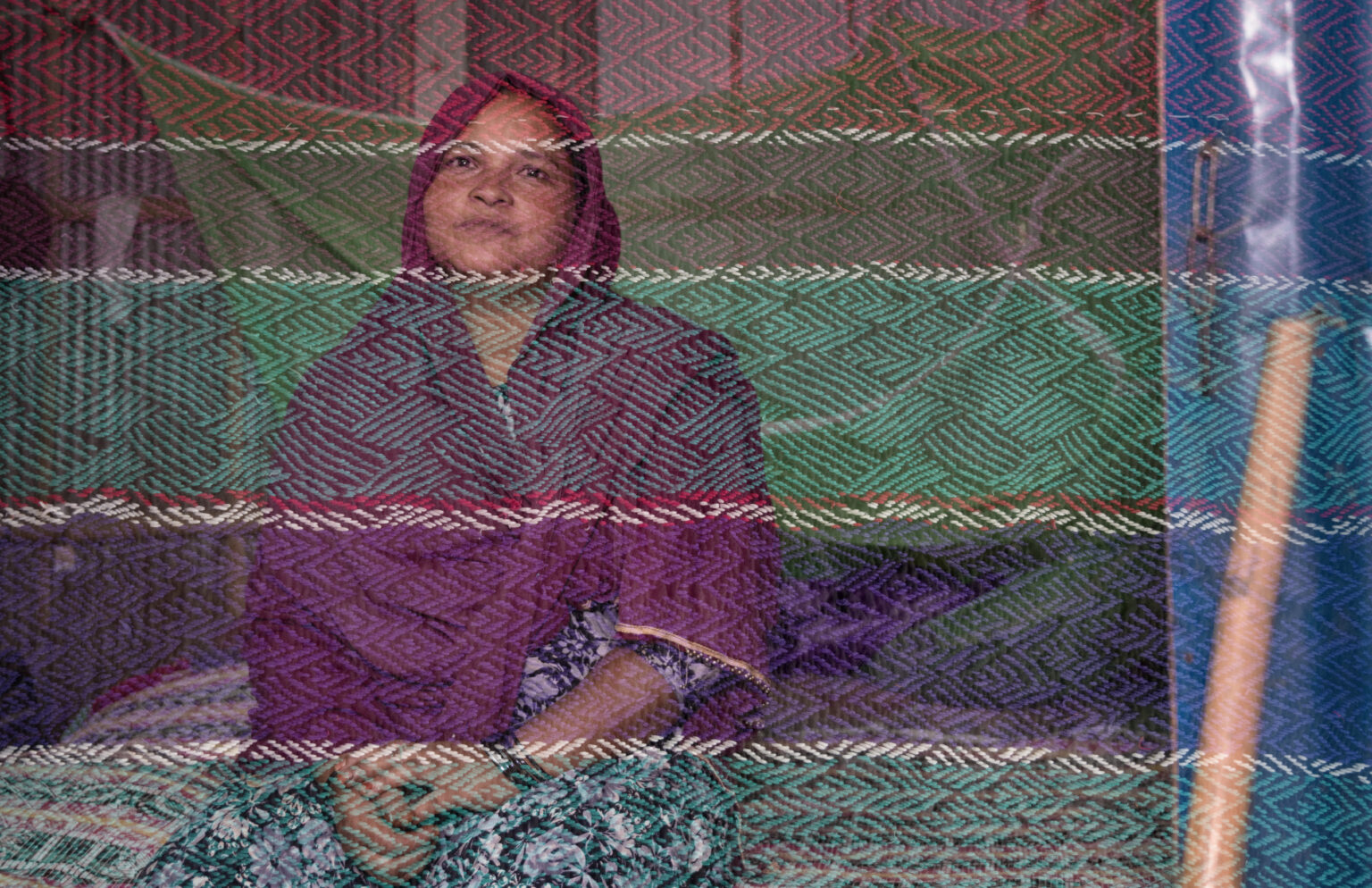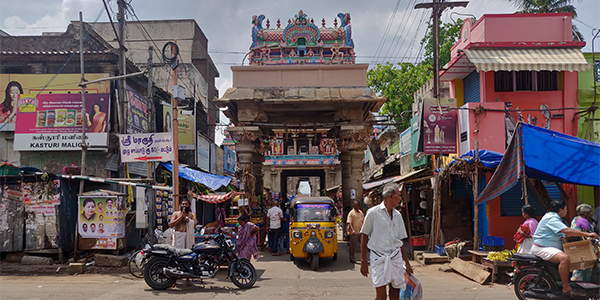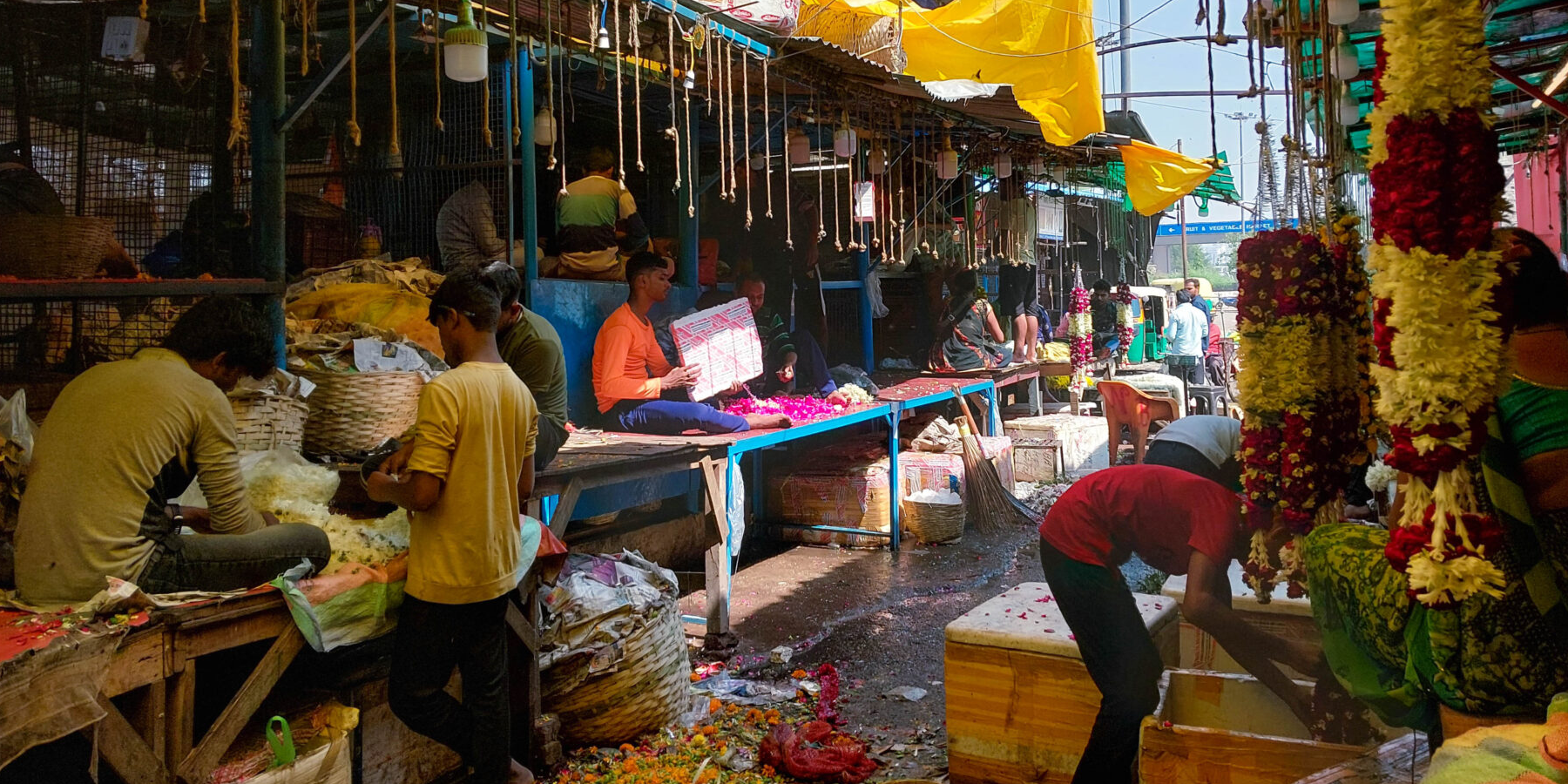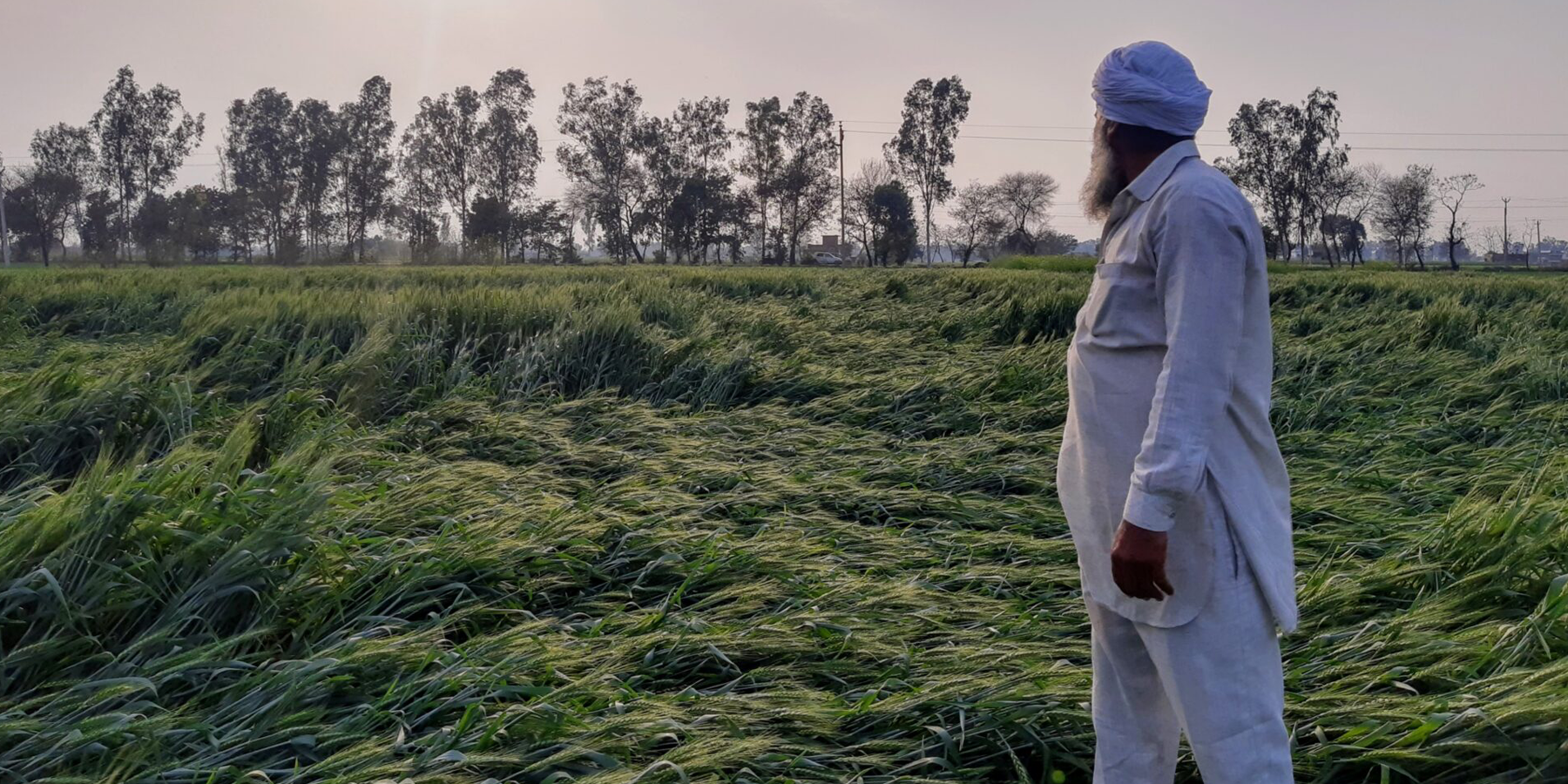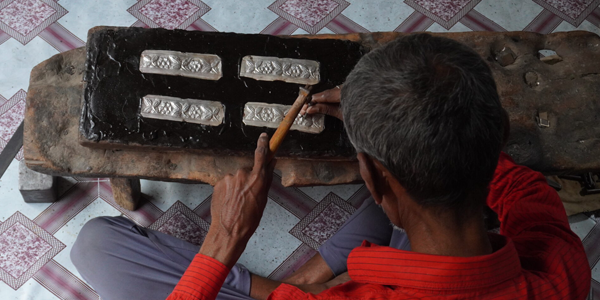Malihabad, tehsil and Nagar panchayat in Lucknow district, Uttar Pradesh is famous for its mangoes. The Malihabadi Dussehra, a variety of mango, got its Geographical Indicator [GI] tag in 2009[1]. Even though Mangoes are widely consumed across the subcontinent, a common narrative of all the mango cultivators of the region is: “Everybody loves mangoes, but no one wants to make the lives of mango farmers any better.”
Malihabad has a population of roughly 3.5 lakh people, of which most of them belong to the Scheduled Caste groups[2]. Mangoes from this region are sent all over the country. However, for the cultivators who have lived here since childhood, the situation on the ground is becoming difficult due to climate change.

Historically, mango cultivation has been a family legacy in Malihabad which has developed and continued for hundreds of years. According to locals legend, in the 1800s, it was instigated by Faqeer Muhammad Khan alias Goya Malihabadi, who first noticed that Malihabad’s soil was rich and had the right climate for mango cultivation. Gradually, mango farming spread across the state. As a result, Uttar Pradesh became the largest mango-producing state in India with a share of 23.58%. There are 15 mango belts in the state spread across 13 districts, with an annual production of 45 lakh metric tonnes [3].
Malihabad’s mango belt produces the most yield in the state. A major part of the estimated produce, nearly 7 lakh tonnes, is consumed locally. India overall contributes to 45% of the total world’s mango production but accounts for less than 2% (1.35%) of the international mango trade as India consumes most of its production [4].

Historically, mango cultivation has been a family legacy in Malihabad which has developed and continued for hundreds of years. According to locals legend, in the 1800s, it was instigated by Faqeer Muhammad Khan alias Goya Malihabadi, who first noticed that Malihabad’s soil was rich and had the right climate for mango cultivation. Gradually, mango farming spread across the state. As a result, Uttar Pradesh became the largest mango-producing state in India with a share of 23.58%. There are 15 mango belts in the state spread across 13 districts, with an annual production of 45 lakh metric tonnes [3].
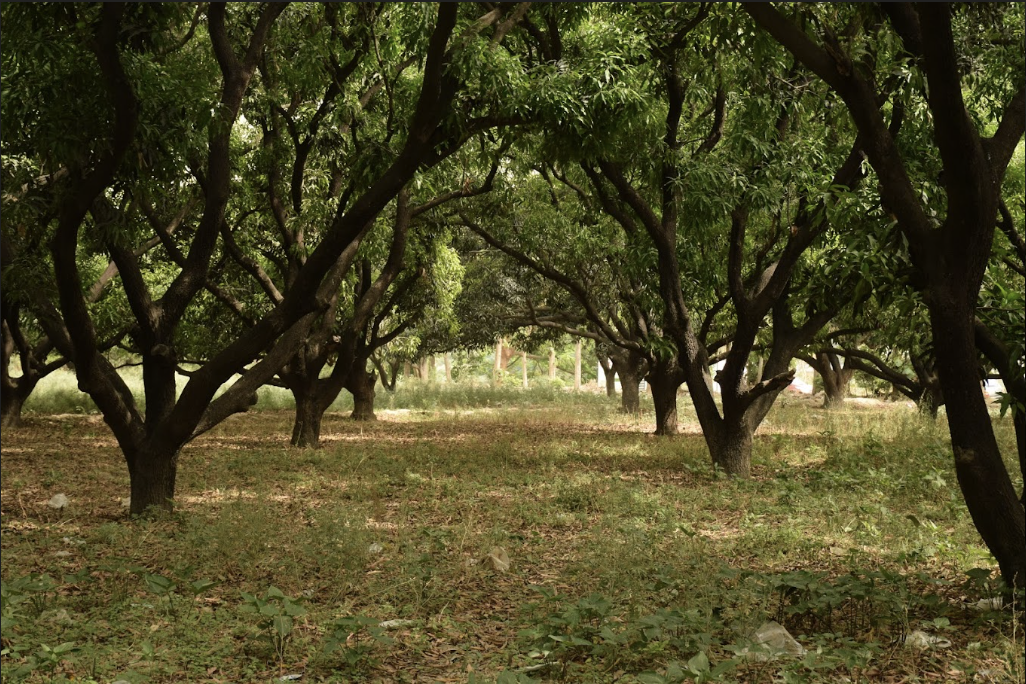

Malihabad’s mango belt produces the most yield in the state. A major part of the estimated produce, nearly 7 lakh tonnes, is consumed locally. India overall contributes to 45% of the total world’s mango production but accounts for less than 2% (1.35%) of the international mango trade as India consumes most of its production [4].
However, climate change such as change in rainfall pattern and rise in temperature have impacted mango production in Malihabad. “No mango has ripened yet. By now, some of them should have ripened but the entire process has been delayed” says Haji Kalimullah, a Padma Shri awardee, also known as the ‘Mango Man of India.’
Kalimullah has a huge tree in the middle of his orchard which has 200 varieties of mangoes. He says that the mango variety in tehsil Malihabad has almost halved from 1,300 to 700 over the years. Today, Dussehra, Chausa, and Langda have become more prominent [5].

“The extreme heat and short but intense periods of rainfall followed by dry spell have affected the growth of mangoes,” says Kalimullah. “A very important climate factor is the loo (heatwave). The heat waves used to arrive here by May and June but this time it started in March. Because of it, the mango flowers which are in a nascent stage then have been damaged by the heat waves.”

In the month of February, farmers were relieved at the sight of dense white bunches of flowers on their mango trees. The buds indicated good yields in the upcoming months. The mango crops are exteremly sensitive during the flowering state, growing only in a temperature of 24-30 degree Celsius. However, due to the unlikely early arrival of loo in March and April, the flowers dried and shed. According to meteorologists, March 2022 was the hottest in the last 122 years while the month of April 2022 was the hottest in the last 50 years [6].
Along with this, the growing problem of water shortage and poor irrigation further exacerbates the impact of excessive heat and uneven rainfall. In April 2022, the government provided cultivators a water pump but there was no water in it. Poor irrigation system, along with cuts in electricity, results in little to no availability of water during the critical time of flowering. During flowering, it is critical for orchards to be hydrated to lessen the impact of the unrelenting heat. Kalimullah says, “We have also demanded for more ponds and wells to be dug in Malihabad. It only rains for some days now and there is no avenue for the rain to be stored.”
Kalimullah, much like the other farmers, informs that besides climate, fertilizers and pesticides also exacerbate their problems. He adds, “Because of the fertilizers, many orchards and huge trees of mangos have burnt or been destroyed. For a mango tree, it is imperative to give them the right medicine at the right time.”
Cultivators who have used pesticides recklessly saw a further drop in yield. The reason behind it- chemicals like sulphur add additional heat to crops which burns the flowers. Lack of knowledge, both on the part of farmers and fertilizer sellers, along with low quality of fertilizers add to the problem. There is a growing demand for testing labs to be opened in Malihabad to check the credibility of the pesticides.


One of the major obstacles in the mass growth of mangoes is an insect called cutter, the farmers explained. These pests attach themselves to the mango and damage their leaves. Even though the fertilizers were freshly sprayed, most trees had a cutter on them. These cutters exist in abundance proving the fertilizers to be futile. If a mango tree gets infested by cutters, they are most likely to affect all the mangoes in that tree. This costs the farmers since if a mango gets damaged or spotted it loses its market value in the mandi.

Malihabad has more than 90% mango coverage in many areas. It is generally difficult to manage the pests where mono-cropping is in practice [6]. Controlling pests in singular orchard becomes ineffective as insects travel through neighbourings, Wali, a mango farmer from Malihabad, adds. The cultivation of mangoes is a generational occupation in Wali’s family.
Dressed in an all-white white kurta-pyjama, he showed us around his bagh, wary of the current state of mango cultivation. He mentioned that he started growing several other fruits and plants as it has become difficult to sustain oneself merely through mango cultivation. He stated, “There is no mechanism for the farmers at all. No effort to listen to us. Neither this government nor the previous ones bothered to really help us.”
Due to climate change, shortage of water, overuse of pesticides, and swarming pests, there has been a decrease in production leading to an increase in prices. According to the local vendors, in 2021 mangoes were sold at Rs. 60-70/kg while in 2022 they were sold at Rs. 100-120/kg. An average seller used to sell around 40-50 kilos of mangoes but in 2022 the amount fell to 15-20 kilos.

Many farmers have taken loans and debts from banks and private entities to help their cultivation, but it has not helped the business much because of the climate and quality of fertilizers. Their cultivation area has reduced as compared to previous years while the labour cost is rising. Their woes are not limited to their produce alone. Farmers say Malihabad lacks a lot of facilities in general such as a proper hospital or public washrooms. They believe that due to the ‘mango belt’ tag they can neither get an udyog (development) nor any other industry in the area. If the mango produce for a year is poor, the farmers have limited options to earn money as there are little to no jobs in that belt other than in Mango cultivation. The cultivators stated that they either sell their Baghs/Land or set up a commercial complex on their land and earn money through rent.



